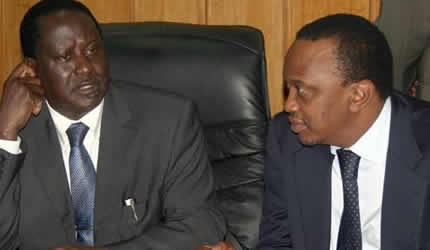Uruguay, soccer crazy nation
playing soccer.
Back home in Zimbabwe, l am not sure whether I have seen a group of young players, who are not in school uniform, playing soccer either at Barclays Sports Club, Alex Sports Club, Zengeza 2 grounds or Nyameni grounds in Marondera.
But at all these places, you are guaranteed of seeing adults past their prime time, engaging in social soccer and yesterday I am sure a visit to Alex Sports Club in Harare, one would see a social soccer team such as Mafero Mafero in action.
For the one week I have been here, I have not seen a single social soccer match being played in the open grounds or the small sided pitches but I only saw young boys, properly kitted, playing some organised football.
And Uruguay Football Association technical director, Daniel Banales, had interesting revelations which gave me all the answers as I had been wondering how a nation of such a small population of 3,2 million have managed to surpass their rivals such as Argentina and Brazil in the oldest international continental football competition, Copa America, winning it a record 15 times while Brazil have only won it eight times.
“We believe in grassroots development and we started from there. It takes years but we have worked for so many years. “We have a very good job with the infants and all the boys from the age of six years up to 12 years throughout the country are being involved in the league.
“Every year 60 000 players from this age-group are involved in this league, which have so many clubs throughout the country.
“We have a population of about 3,2 million so what it means is 10 percent of the population are involved in this project.
“In fact, every weekend, 3 000 players would be on the move, playing these matches and it is quite a big thing here. These boys have good coaches for this programme only and we always equip these coaches with trainers’ courses. Our courses for the coaches are good and we try to reach everyone and have everyone certified,” Banales said.
He also said this project is separate from the school project. It is a stand alone project with schools running theirs as well.
“When these kids turn 13, the best ones start playing for professional youth teams. We have the Under-13 up to Under-19 and there is also Under-23. And every club in the league has all these age-groups teams.
“Our main league, the top-flight, has 16 teams and the second league, which is like the first division, has 14 teams and these two leagues are the most important in our country and then of course we have the amateurs’ league and so forth.
“So all these 30 professional clubs, they have these age-groups teams and every year 7 000 kids that graduate from the Under-6 to Under-12 project, 1 000 who would have emerged as the best are then absorbed by the youth clubs of these 30 teams.”
But Banales said they face some sort of a problem with the remaining 6 000 kids. Most of them end up playing in the amateur leagues while some of them start playing other sport such as basketball or indoor soccer.
“We keep going and all these clubs are very well organised with the players getting to know how to play on a professional pitch, in a professional set-up from a very young age.”
Even Uruguay’s famous players such as Luis Suarez and Diego Forlan came through this set up.
“But from these 30 clubs, only seven are based outside the capital Montevedio, so the capital city which has 1,5 million people has 23 clubs while the rest of the country has only seven clubs, a trend which is worrisome but there is nothing we can do about it.
“Even the players that break to play into the national team, about 70 percent are from outside Montevedio and would have only come to the capital at the age of 13 years when they would have graduated to play for the youth teams.
“Suarez and Cavanni (Edinson), they are from Salto, a town which is 500km outside Montevedio,” said Banales.
The technical director says Uruguay football is the least rewarding in the South American region but they have mastered a way around this problem. The national team’s main sponsor is the television station which has the permanent television rights while other local companies such as banks and telecommunication companies just partners them here and there.
“We are very poor when it comes to football renumeration and our players don’t earn much money here, actually we pay less than any other South American country when it comes to club football, so maybe for us the survival strategy has made us strong and push us to do more and thrive to achieve more,” said Banales.
Most of the Uruguay players move to clubs in countries such as Brazil, Argentina, Chile and even Bolivia.
The former coach and player says while technology has altered the way in which football was religiously played in Uruguay back in the days which saw the nation’s football team winning the 1924 and 1928 Summer Olympics Games and went on to complete a remarkable hattrick in a decade by hosting and winning the first World Cup, the sport still runs in the blood of the Latin Americans.
“We used to play football every day and night. A long time ago, every piece of land, any open space when we were kids, was converted to playing soccer and people would go to school maybe for about four hours only.
“But now it is different and we are supposed to be having more good players, but kids now go to school for more hours and the streets have become dangerous with traffic and they no longer have free open spaces.
“Only in the country areas they still enjoy this as they have open spaces. We have soccer in our blood here and when kids are born, the first thing they have is a soccer ball. Even when he doesn’t know what a soccer ball is, from one year he starts kicking the ball and 90 percent of Uruguayan families do that,” said Banales.
Banales said, apart from these grassroots development projects, sometimes they feel that they are not doing enough as they believe they have inborn talent and should progress more than they are doing.
Uruguay, who are ranked 16th in the world, would be in Brazil this June to feature in the Confederations Cup as they are the current champions of the Copa America. In two weeks time, La Celeste, as the team is affectionately known, resume their bid to qualify for next year’s Fifa World Cup when they play Paraguay in the World Cup qualifiers and despite their precarious position, the association’s technical director feels they will qualify and may reach the finals after they finished fourth at the 2010 World Cup in South Africa.









Comments